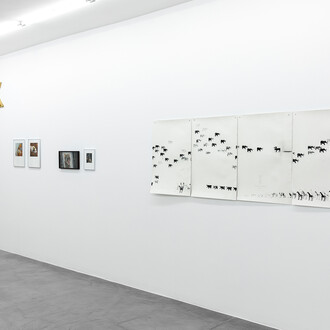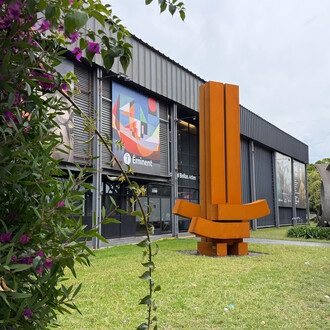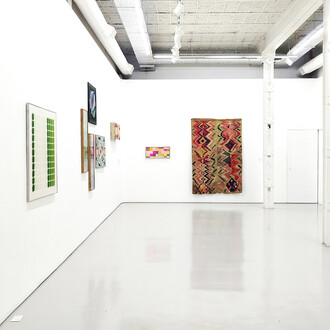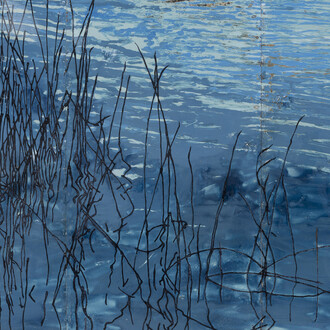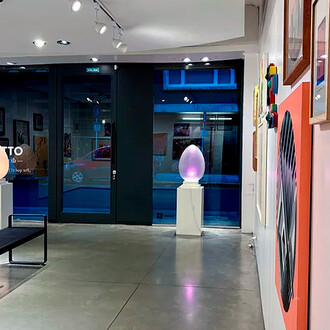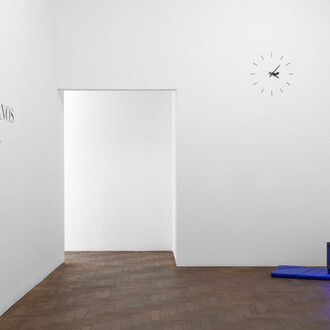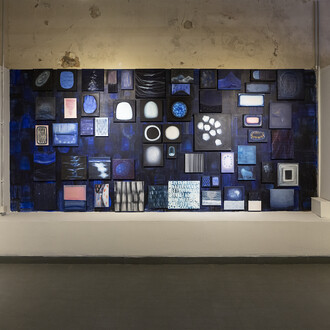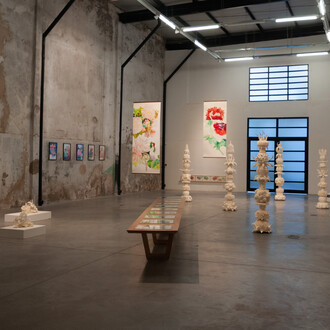[I am] a force of the past,
more modern than any modernist.(Pier Paolo Pasolini)
We live in cursed times,
but that does not mean we should feel
that life is any less beautiful—though
death does weigh heavy.(León Rozitchner)
In a patio with a thousand shades of green and mountain view, a group of weavers turns threads into blankets, ponchos, and scarves. Selva Díaz, the matriarch, inspects the work of the others, most of them men. Her children and grandchildren join in the task, and La Negrita, Selva’s cousin, laughs at the antics of the young men who have come home late from a party somewhere. Everyone is seeing to the daily toil of weaving llama, sheep, alpaca, and vicuña wool. In Londres, Catamarca province, a learning process comes to an end, an education Gabriel Baggio had begun much earlier, when he was a boy who would wake up to delightful sounds and bodies gathered together. He once said that the archive of the knowing-making processes he has learned resides in the body. The people he works with are embodied archives of ways to cook, weave, carve wood, and build an adobe home—crafts by no means immediate, trades passed down from one generation to the next in a patient exercise of listening and exchange that can take weeks, months, years. When Baggio comes into contact with that archive, he generates the recovery and transmission of interlinked knowledges.
Some months before the trip to Catamarca where he came into contact with the archive of the women weavers, something startling surfaced from his embodied archive—a jarring and involuntary return of the past. In a hallucinatory procedure, a foundational memory emerged: the concert Mercedes Sosa gave at Ópera theater in Buenos Aires in February 1982 in a brief lapse between periods of exile. Sosa performed thirteen concerts over the course of ten nights. Baggio saw Sosa twice, the first time in the flesh when he a child (oddly, his parents let him go alone), and the second over forty years later, when he returned to that concert in his mind’s eye the hundreds of red carnations that welcomed the singer who had had to flee the country in 1978, after receiving death threats and, worse still, being banned from exercising her craft.
Mercedes’ last concert before her first period of exile was on October 18, 1978 at the Almacén San José, a venue in La Plata frequented by students and folk musicians from around the country. “You could write the history of Argentine protest songs from the sixties and seventies,” states Sergio Pujol, that is, on the basis of the artists who played at the Almacén, which he calls “our Balderrama” in reference to the folk venue in Salta province immortalized by Manuel J. Castilla and “Cuchi” Leguizamón. That night in La Plata proved tragic. The police crackdown got underway when Mercedes sang Cuando tenga la tierra and Canción con todo, two songs banned by the military dictatorship’s censorship apparatus. As soon as she did, the police raided the Almacén and carted away the singer and her son, along with the musicians accompanying her, the owners of the venue, and the over two hundred and fifty people attending the show. It took a number of police vehicles to get all of them to the station. They were accused of having participated in “an act of ideological diffusion,” a prohibited act of transmission that, according to the authorities, had to be cut short.
(Midnight, again, by Jesu Antuña. La Plata, October 18, 1978)





